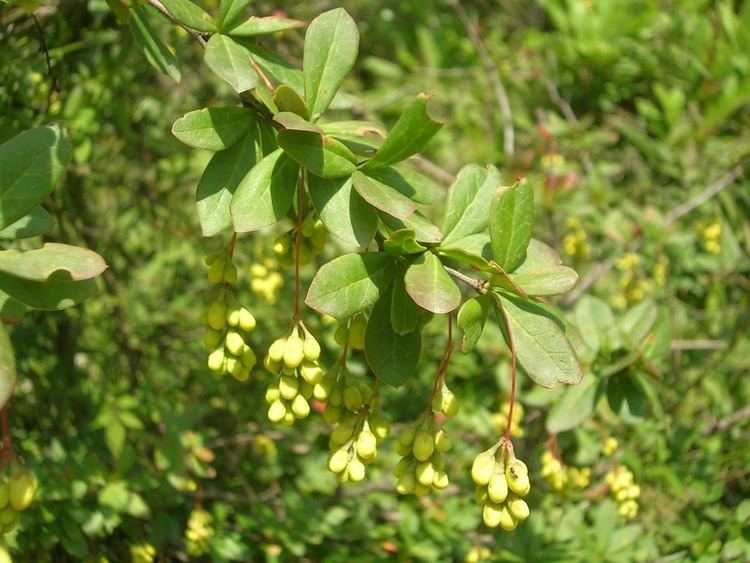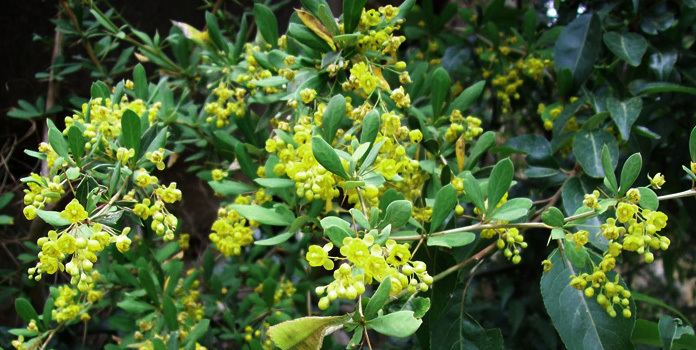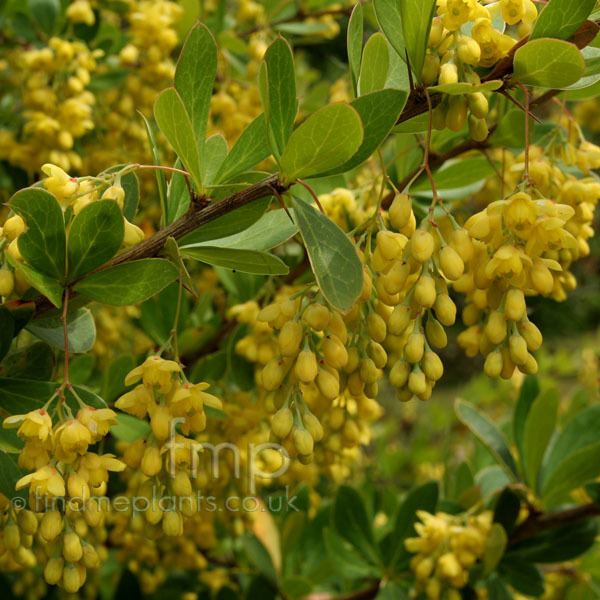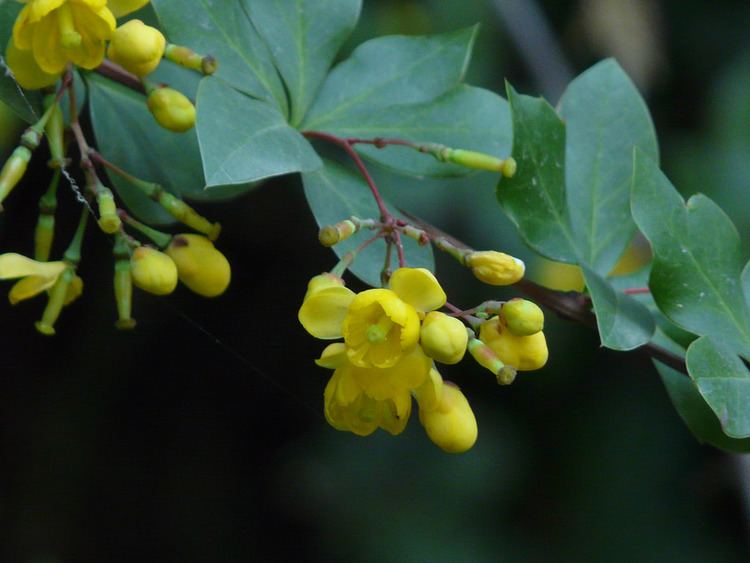Rank Species | ||
 | ||
Similar Common barberry, Picrorhiza kurroa, Boerhavia diffusa, Terminalia bellirica, Embelia ribes | ||
Berberis aristata, also known as Indian Barberry or Tree Turmeric, belongs to the family Berberidaceae and the genus Berberis (pronounced bẽr’ber-is). The genus comprises approximately 450-500 species of deciduous evergreen shrubs and is found in the temperate and sub-tropical regions of Asia, Europe, and America. B. aristata is native to the Himalayas in India and in Nepal. It is also naturally found in the wet zone of Sri Lanka.
Contents

Berberis aristata
Morphology

Berberis aristata is characterized by an erect spiny shrub, ranging between 2 and 3 meters in height. It is a woody plant, with bark that appears yellow to brown from the outside and deep yellow from the inside. The bark is covered with three-branched thorns, which are modified leaves, and can be removed by hand in longitudinal strips. The leaves are arranged in tufts of 5-8 and are approximately 4.9 centimeters long and 1.8 centimeters broad. The leaves are deep green on the dorsal surface and light green on the ventral surface. The leaves are simple with pinnate venation. The leaves are leathery in texture and are toothed, with several to many small indentations along the margin of the leaf.
Flowers and fruits

The flowering season begins in mid-March and lasts throughout the month of April. The yellow flowers that develop are complete and hermaphroditic. The average diameter of a fully opened flower is 12.5 millimeters. The flowers form a racemose inflorescence, with 11 to 16 flowers per raceme, arranged along a central stem. The flower is polysepalous, with 3 large and 3 small sepals, and polypetalous, with 6 petals in total. The male reproductive structure, the androecium, is polyandrous and contains 6 stamens, 5 to 6 millimeters long. There is one female reproductive structure, the gynoecium, which is 4 to 5 millimeters long and is composed of a short style and a broad stigma. The plant produces bunches of succulent, acidic, edible berries that are bright red in color and have medicinal properties. The fruits start ripening from the second week of May and continue to do so throughout June. The berries are approximately 7 millimeters long, 4 millimeters in diameter and weigh about 227 milligrams.
Uses

The fruits of the species are eaten by people living in areas where the plant is found, often as a dessert. They are juicy and contain plenty of sugars and other useful nutrients that supplement their diet. Its stem, roots, and fruits are used in Ayurveda. The roots can also be used for making an alcoholic drink. Aqueous roots extract of this plant was found to have antimalarial activity in animal models. The plant as a whole is a good source of dye and tannin which is used for dyeing clothes and for tanning leather. Roots extract of B. aristata was found to have good dyeing properties on cotton.
Medicinal uses
The root bark contains berberine, quaternary ammonium salt of isoquinoline alkaloid. Berberine has antibacterial, antifungal, antiviral and antioxidant properties. It can possess anti-inflammatory, anti-tumor and anti-diabetic activities. A women’s university in India, Shri Padmavathi Mahila Viswavidyalayam Tirupati, conducted a study to evaluate the effectiveness of ayurvedic medicine. They designed a study to provide scientific evidence for the use of Berberis aristata in the treatment of urinary troubles caused as a side effect of the anti-cancer chemotherapy drug, cisplatin. Cisplatin is known to cause nephrotoxicity which is a renal disease or dysfunction. In conclusion, the researchers found that the side effects of cisplatin were reversed by the antioxidant properties of the decoction of root bark of Berberis aristata.
Other research universities in India also studied the medicinal properties of Berberis aristata. In a scientific study of the anti-diabetic activity of the plant, diabetic rats treated with the ethanol extract of the roots showed a significant reduction of serum glucose level. It also showed a significant increase in the level of HDL cholesterol. Additional research must be conducted to determine if the hypolipidemic properties of the plant could serve as a protective mechanism against the development of atherosclerosis, which is usually associated with diabetes.
A preparation called rasaunt is prepared from this plant. Rasaunt is prepared by boiling the bark of the root and of the lower part of the stem in water. The solution is then strained and evaporated till a semi-solid mass is obtained; this is rasaunt. It is mixed with either butter and alum, or with opium and lime-juice. It is also reported to be a mild laxative.
